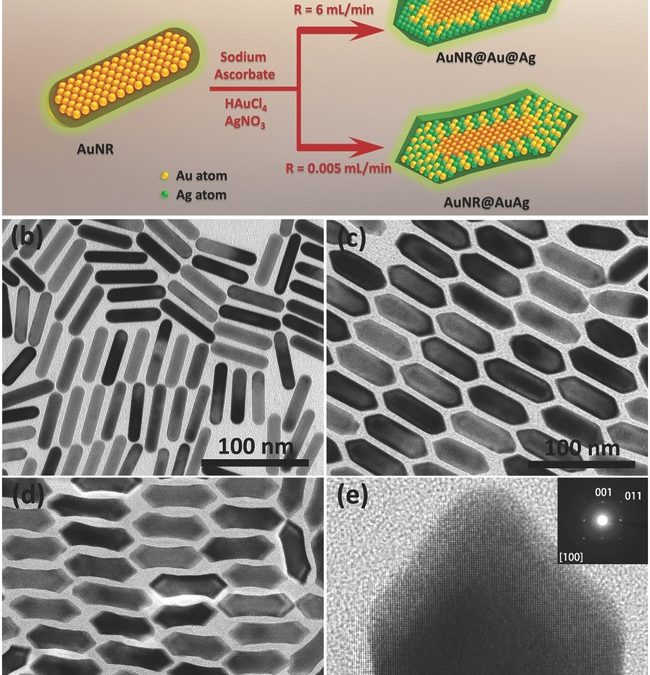Colloidal metal nanocrystals with strong, stable, and tunable localized surface plasmon resonances (SPRs) can be useful in a corrosive environment for many applications including field‐enhanced spectroscopies, plasmon‐mediated catalysis, etc. Here, a new synthetic strategy is reported that enables the epitaxial growth of a homogeneously alloyed AuAg shell on Au nanorod seeds, circumventing the phase segregation of Au and Ag encountered in conventional synthesis. The resulting core–shell structured bimetallic nanorods (AuNR@AuAg) have well‐mixed Au and Ag atoms in their shell without discernible domains. This degree of mixing allows AuNR@AuAg to combine the high stability of Au with the superior plasmonic activity of Ag, thus outperforming seemingly similar nanostructures with monometallic shells (e.g., Ag‐coated Au NRs (AuNR@Ag) and Au‐coated Au NRs (AuNR@Au)). AuNR@AuAg is comparable to AuNR@Ag in plasmonic activity, but that it is markedly more stable toward oxidative treatment. Specifically, AuNR@AuAg and AuNR@Ag exhibit similarly strong signals in surface‐enhanced Raman spectroscopy that are some 30‐fold higher than that of AuNR@Au. When incubated with a H2O2 solution (0.5 m), the plasmonic activity of AuNR@Ag immediately and severely decayed, whereas AuNR@AuAg retained its activity intact. Moreover, the longitudinal SPR frequency of AuNR@AuAg can be tuned throughout the red wavelengths (≈620–690 nm) by controlling the thickness of the AuAg alloy shell. The synthetic strategy is versatile to fabricate AuAg alloyed shells on different shaped Au, with prospects for new possibilities in the synthesis and application of plasmonic nanocrystals.


Recent Comments